#and then TCM happened and I discovered Cary Grant
Explore tagged Tumblr posts
Text
classic filmblr let's manifest Remington Steele, Great Show or Greatest Show? 2023
ok but i need the niche tumblr girlies to do for remington steele what they did for m*a*s*h and columbo
#YES#manifest remington steele great show or greatest show?#I think we need an RS podcast#who will do it with me#classic filmblr#old hollywood#remington steele#true facts: remington steele was my intro to classic films#back before home video even existed for me#and then I got my first job working in a video store#and worked my way through the RS films#and then TCM happened and I discovered Cary Grant#and the thin man movies which were all inspiration for Michael Gleason#listen this is episode 1 right here
83 notes
·
View notes
Text
Revisiting Oscar-Nominated and Winning Pictures By Susan King
We all have our favorite Oscar winners that we love to watch over and over again. But there are numerous Oscar winners and nominees that have gained new life thanks to TCM, HBO Max and DVD that are definitely worth revisiting. Here are some of my favorites:
RANDOM HARVEST
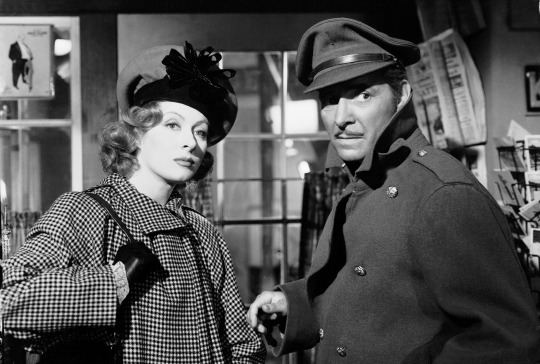
I interviewed the legendary funny man Carl Reiner a few months before his death and the conversation drifted to RANDOM HARVEST (’42) and how much he loved the romance. Robert Redford is also a fan. In the 1990s, he was planning on doing a remake, and in 2014, it was announced that Julian Fellowes (Downton Abbey) was hired to pen a remake. The handsome MGM production based on James Hilton’s bestseller starring Ronald Colman and Greer Garson was a huge hit that year and was nominated for seven Oscars including Best Film, Actor for Colman, Actress in a Supporting Role for Susan Peters and Director Mervyn LeRoy.
Both Colman and Garson had great success in other Hilton adaptations – Colman starred in LOST HORIZON (’37) and Garson made her U.S. film debut and earned her first Best Actress Oscar nomination in GOODBYE, MR. CHIPS (’39). RANDOM HARVEST is often overlooked by the other big MGM film released in 1942, William Wyler’s MRS. MINIVER. Not only was the stirring drama about a British family attempting to survive the years of World War II a blockbuster at the box office, but it also won a striking eight Oscars.
But I think RANDOM HARVEST is the more engaging film. It’s hard not to fall in love with this romantic tale with Colman at his most dreamy as a shell-shocked amnesiac veteran of World War I (Colman was wounded in the global conflict) named Smith who falls in love and marries a loving young entertainer (Garson). But Smithy, as Garson’s Paula calls him, is hit by a car on his way to a job interview and wakes up with no memory of the past three years but does remember who he really is – an aristocrat by the name of Charles Rainier.
Will true love reunite these two? The sigh level is very high with RANDOM HARVEST and this love story has a very strong place in my heart.
NONE BUT THE LONELY HEART
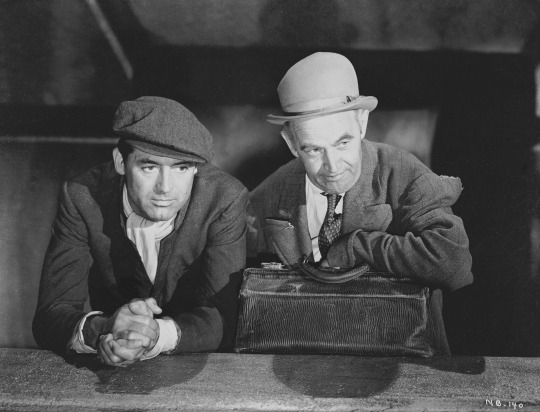
I’ve had more than a few people ask me why I like NONE BUT THE LONELY HEART (’44) so much. It’s depressing, they say. It’s downbeat, they say. But I think it’s a chance to see Cary Grant in a rare break out of his “Cary Grant” suave, sophisticated image. Adapted and directed by Clifford Odets from the novel by Richard Llewellyn (How Green Was My Valley), NONE BUT THE LONELY HEART casts Grant as Ernie Mott, a Cockney drifter who returns home to his Ma (Ethel Barrymore). When he learns that she’s dying of cancer, Ernie stays to help run her second-hand shop. But Ernie can’t stay out of trouble, joining forces with a gangster stealing cars and pursuing the mobster’s wife (June Duprez).
Meanwhile, his neighbor Aggie (Jane Wyatt) is madly in love with him and tries to save Ernie from a life of crime. The film was generally warmly received, earning four Oscar nominations and winning supporting actress for Barrymore. She shot her scenes during her two-week vacation from her Broadway triumph The Corn Is Green, and the Academy Award transformed the Broadway star into a much-in-demand film actress. She would go on to earn three more Oscar nominations.
Grant, who had earned his first Oscar nomination three years earlier for PENNY SERENADE (‘41), didn’t attend the Academy Awards where Bing Crosby won best actor for GOING MY WAY. Grant never earned another Oscar nomination, but received an Oscar honorary in 1970.
NIGHT MUST FALL
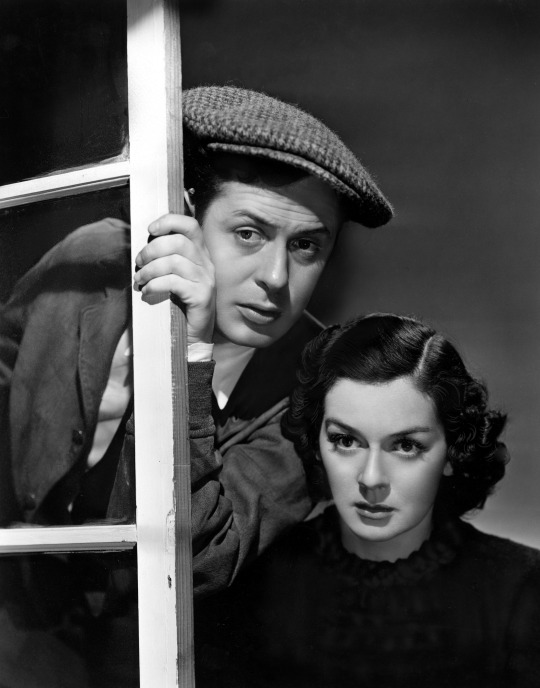
Handsome and charismatic Robert Montgomery was one of MGM’s top leading men in the 1930s, best known for his work in comedies including PRIVATE LIVES (’31) and FORSAKING ALL OTHERS (’34). Though he did an occasional dramatic part, nothing really stretched him as an actor until NIGHT MUST FALL (’37). Montgomery had long been bugging MGM head Louis B. Mayer for better roles. He supposedly allowed Montgomery to do NIGHT MUST FALL because the studio head thought the actor would be embarrassed when the movie failed. Montgomery later said, “they okayed me playing in it because they thought the fan reaction in such a role would humiliate me.” He went so far as to help subsidize the film’s production budget.
Based on the play by Emlyn Williams which ran on Broadway in 1936, NIGHT MUST FALL finds Montgomery playing Danny, a serial killer who just happens to have a trophy from his latest victim—her head—in a hatbox. Danny charms his way into the heart and home of a wealthy elderly woman (Dame May Whitty, reprising her London stage role). Rosalind Russell, who made five films with Montgomery, plays the elderly woman’s niece who has her suspicions about Danny but can’t convince her aunt that she’s in danger. Both Montgomery and Whitty earned Oscar nominations.
Though Montgomery returned to the comedy genre after NIGHT MUST FALL, he began directing films such as LADY IN THE LAKE (’46) and found great success in TV in the 1950s with the anthology series Robert Montgomery Presents, which often featured his daughter Elizabeth.
THE NAKED SPUR
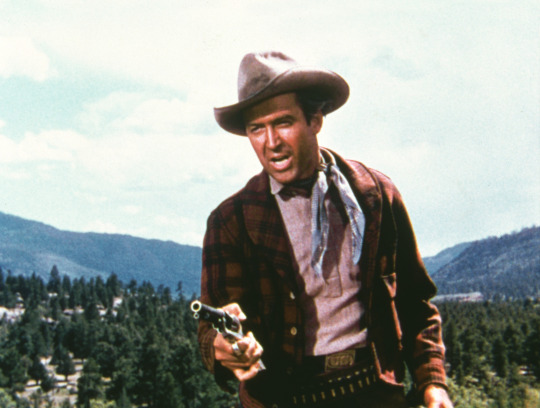
Jimmy Stewart’s image took a 180 degree turn in the 1950s thanks to Alfred Hitchcock with REAR WINDOW (’54) and VERTIGO (’58), but most notably in the five Westerns he made with Anthony Mann. Far from the boy-next-door character he played pre-World War II, Stewart was transformed into conflicted, troubled men – anti-heroes who often could be as villainous as the bad guys who peppered these sagebrush sagas. (Mann also directed Stewart in three non-Westerns).
THE NAKED SPUR (’53), which earned a screenplay Oscar nomination for Sam Rolfe and Harold Jack Bloom, is my favorite of their collaborations. Stewart really digs deep into the character of Civil War veteran turned bounty hunter, Howard Kemp. He’s angry and bitter having lost his land during his conflict. Kemp hopes he can get his land back by working as a bounty hunter. And he’s doggedly determined to get outlaw Ben Vandergroat (a fabulously vile Robert Ryan). Along the way, he encounters two men (Millard Mitchell and Ralph Meeker) who join him on his journey. And when he finds Vandergroat, he also discovers he has a young woman (Janet Leigh) with him. Intelligent, often disturbing and brilliantly acted, THE NAKED SPUR is an exceptional exploration of the dark side of humanity.
#Oscars#Academy Awards#nominations#westerns#crime#drama#old Hollywood#classic#Jimmy Stewart#robert montgomery#Cary Grant#ronald colman#greer garson#TCM#Turner Classic Movies#Susan King
101 notes
·
View notes
Text
From Hitchcock to Star Wars: What Makes a Great MacGuffin
https://ift.tt/2PXsez9
In the fall of 1939, director Alfred Hitchcock stood before Columbia University to tell a story we can only hope he invented. With a ruthless, dry delivery, Hitch spoke of two Scotsmen on a train. One of these fellows carried with him a mysterious package he says is a “MacGuffin.” When the other man asks what exactly is a MacGuffin, the carrier responds, “It’s an apparatus for trapping lions in the Scottish Highlands.” What an odd response, the other guy thinks. After all, there is no such thing as highland lions! When he points this out though, the MacGuffin’s owner says, “Well then, that’s no MacGuffin!”
It’s an amusing anecdote which is as circuitous as it appears pointless. But that very pointlessness was always the appeal for Hitch, who four years earlier popularized the storytelling term of a “MacGuffin” with his film The 39 Steps. In that movie, a man is mistaken for a spy and is constantly hounded for information about “the 39 Steps,” a mysterious object or piece of information worth killing over. Yet when the movie ends, the viewer is really no closer to learning what those 39 steps are. Or as Hitchcock told Columbia students in ‘39, “You see, that a MacGuffin is actually nothing at all!”
Even so, the storytelling tool has dominated our pop culture, from cinema to literature, for nearly a century since Hitchcock left the stage.
“The best MacGuffin is the one that 30 minutes after the movie is over, you have no idea what it was,” says Eddie Muller, the host of Turner Classic Movies’ Noir Alley. “To me, that represents the essence of the MacGuffin. It’s like you remember everything that happens in the story, but you have no idea what it was that they were after. ‘Like, what was that again? I can’t remember!’”
For Muller and fellow TCM host Ben Mankiewicz, what matters is the great chase through the train; not what the Scotsman is hiding in the box on it. Even so, distinguishing what actually constitutes a MacGuffin is something TCM hosts are thinking a lot about these days thanks to their network’s new Friday night series about some of the greatest MacGuffins in movie history. Last Friday, TCM aired Hitchcock’s groundbreaking The 39 Steps, as well as Psycho (1960) and North by Northwest (1959). This week, the series continues with The Maltese Falcon (1941), Casablanca (1942), and Citizen Kane (1941).
“I never really thought about [MacGuffins] ever, I must say, until getting to TCM and until we started talking about scripts,” Mankiewicz says to Muller and myself over a joint Zoom interview. Yet it’s also why he appreciates having Muller as a co-host (and occasional sparring partner), with the latter being intimately familiar with the narrative tools of the trade. For in addition to setting up shop in Noir Alley, Muller’s also a novelist, having authored The Distance (2002) and Shadow Boxer (2003).
“I write fiction, and we have these things that we always use,” Muller says. “The characters have to have a goal and there have to be obstacles; there has to be conflict. And when you write mystery fiction, there’s even more rules involved. Then there’s the red herring and there’s the whodunit. The MacGuffin is, by and large to me, part of that style of fiction.”
The emphasis on characters fighting over an object or prize of incredible importance to themselves, if not necessarily to the audience, is what facilitates some of the greatest thrillers and adventures in cinema. Hitchcock famously put uranium in wine bottles in Notorious (1946), but all anyone remembers about the ending of that movie is Cary Grant saving his fellow spy, Ingrid Bergman, from the Nazi house where the wine bottles are stored. Indeed, Mankiewicz muses that audiences may have gotten that MacGuffin confused with other Hitchcock spy thrillers.
“Is it uranium in wine bottles in Notorious and a microfilm with state secrets in North by Northwest or is it the other way around?” Mankiewicz ponders. “Really, it could be either in both.” Mankiewicz even argues one of the most famous MacGuffins in movie history is still essentially meaningless. John Huston’s The Maltese Falcon is credited by some as the kickoff of the Hollywood film noir movement, and in that picture everyone is lying and dying for the eponymous bird, an allegedly jewel-encrusted statuette of antiquity. But by the time the movie ends, the Maltese Falcon that’s accrued a high body count is discovered to be made of lead.
“Every time I see the movie, I’m struck by the end,” Mankiewicz says. “There’s no Maltese Falcon anywhere. No one’s stolen it from anybody … I’m like these poor sons of bitches, they got to roam the Earth, looking for this thing. Someone could have thrown it away or it never existed.”
Similarly, Michael Curtiz’s Casablanca pivots its entire World War II melodrama on something called “letters of transit,” documents so unassailable that even Nazis will respect their authority and let French freedom fighters travel with them unmolested.
“No such thing exists!” Muller laughs. “That’s why that’s such a good MacGuffin, because it’s all BS.”
Mankiewicz agrees, “Somebody [in the movie] says, ‘The letters of transit cannot be rescinded.’ And I’m like the Nazis were taking over the world, and they’re going to be like, ‘Oh man, you got the letters of transit?! We gotta let them on the plane. Dammit!’” Yet the bit of screenwriting balderdash allowed one of the greatest romantic dramas in movie history to play out in front of an impatient plane propeller.
All that said, both men are apprehensive about the term MacGuffin getting thrown around too liberally.
Read more
Movies
Inside TCM’s Noir Alley with Eddie Muller
By David Crow
Movies
Alfred Hitchcock’s Rope and the Illusion of the Uninterrupted Take
By David Crow
“I hadn’t really thought about the MacGuffins until TCM came up with this idea,” Muller says. “I hadn’t thought about it in years and years, and now I curse this series because I am watching every movie and thinking somebody’s going to call this a MacGuffin.” Both are even circumspect about several of the movies in the series that TCM has deemed prime examples of MacGuffins.
For example, Citizen Kane has one of the greatest mysteries in the movies, with the search for the meaning of “Rosebud,” the final word uttered by Orson Welles’ Charles Foster Kane in the movie’s opening moments. Yet Ben Mankiewicz, whose own grandfather Herman J. Mankiewicz wrote the vast majority of Citizen Kane, including “Rosebud,” is hesitant to include that as a classic example.
“When you Google ‘MacGuffins,’ you see ‘Rosebud’ is there from Citizen Kane,” Ben Mankiewicz says, “but neither Eddie nor I think of that as a true MacGuffin. I guess in some sense it is, but it is also the [thing] the audience cares about, and it tells you everything you need to know about the lead character in the final frame of the picture…. If you’re calling the MacGuffin the thing that motivates the lead character in every movie, well, I mean, there’s a MacGuffin in every movie then.”
Muller also has skepticism toward the inclusion of Hitchcock’s own Psycho. While that movie opens with heavy emphasis on a bundle of $40,000—only for it to wind up at the bottom of a swamp after impulsive thief Marion Crane (Janet Leigh) is murdered in the shower—for Muller that does not make it a true MacGuffin.
“I consider that a red herring,” Muller says. “It is splitting things in a fine way here, but it is something that triggers the action, and then about 40 minutes in, who cares about the money? But it’s really interesting the way Hitchcock understands certain people in the audience are going to always ask that question. ‘But what about the money?’ Because it’s $40,000, so there are those shots where it’s like the envelope with the cash in it, and in the newspaper. Hitchcock is like, ‘Yeah, let’s hold on that for a second, because somebody is going to care about it.’”
That nagging care is the problem for Mankiewicz, who also prefers the MacGuffin to be almost an abstraction.
“Money is tangible,” Mankiewicz says, “it’s something we know. Everybody knows what $40,000 is and what it means, and it’s a crime she’s committed, and she’s either going to go to prison or she’s going to have a life on the run.”
But that distinction of how important a MacGuffin needs to be to the audience is something filmmakers and storytellers have interrogated with each generation. In the complete inverse of Hitchcock, George Lucas famously argued that the MacGuffin is something audiences should care about almost as much as the heroes and villains. Hence why the first Indiana Jones movie is named after its MacGuffin with the title Raiders of the Lost Ark. Mankiewicz acknowledges this evolution.
“Part of the fun of this is that there’s no science to it,” Mankiewicz says. “So to me, the plans for the Death Star, they’re the MacGuffin in Star Wars until the point where an entire planet and millions of people or living beings are incinerated. Then it stops being a MacGuffin; it becomes a massive weapon of war! It tells you, ‘Holly shit, they weren’t kidding around!’”
That dueling impulse continues in modern cinema—it flourishes, even, with the ascension of superhero movies. But then that also has literary roots.
“I remember paying my 12 cents to buy Marvel Comics back in the day,” Muller says, “and they were filled with MacGuffins… In comic books, the MacGuffin’s always whatever the villain needs to possess in order to fulfill his plans for world domination. And I guess it’s the same way in Hitchcock, right? Isn’t that what James Mason was doing in North by Northwest? I need this to fulfill my goal of world domination?”
It’s quite the line between Mason’s microfilm and Thanos’ magic stones in Avengers: Infinity War. Nevertheless, it’s a straight one. Mankiewicz similarly notes that the Marvel movies of today can have great writers who know the craft, especially when the better Marvel movies lean into their humor.
Says Mankiewicz, “Iron Man, to me, remains one of the great movies of the first part of the century and I loved it to death. I stopped feeling that way later.” After a laugh he adds, “The fact is I don’t know that the MacGuffin has changed, we just talk about it differently.”
At the end of the day, it remains a writer’s tool to set action in motion. If a story is told well enough, audiences should care that their characters care—or at least the audience will care about how good the characters look while chasing it.
“I don’t think the MacGuffin is ever the exclamation point at the end of the movie,” Muller says. “In Citizen Kane, the revelation of Rosebud is an exclamation point, and nobody’s going to forget it when they leave the theater. At the end of North by Northwest, you’re talking about Cary Grant hanging off Mount Rushmore, you’re talking about the incredibly sexy scenes on the train. You’re not talking about what it was everybody was after, because you’ve forgotten it five minutes after you’ve seen the movie.”
Adds Mankiewicz, “To me, the MacGuffin is the dash. It leads to a big thing.” You just shouldn’t spend too much time pausing for emphasis on it.
TCM’s MacGuffin series concludes on Friday, March 12, beginning with The Maltese Falcon at 8 pm.
cnx.cmd.push(function() { cnx({ playerId: "106e33c0-3911-473c-b599-b1426db57530", }).render("0270c398a82f44f49c23c16122516796"); });
The post From Hitchcock to Star Wars: What Makes a Great MacGuffin appeared first on Den of Geek.
from Den of Geek https://ift.tt/3bDljDK
0 notes
Text
by Paul Batters
Classic film lovers are passionate about the films they love and all share a special feeling for those films with others. The classic film community is one bound by that love for classic film and it is a romance that will not die. If love forever after ever exists, you will certainly find it amongst those who love it and also write about it.
This article will be the first of two parts which will celebrate the films which brought people to love classic film. A number of people have shared how they came to love classic film as well as the film or films which began that journey for them.
John Greco
Blog – John Greco Author/Photographer
I can’t name just one movie. Each film I watched was like a piece of a puzzle with the right ones fitting the overall picture. It was an assembly of films and filmmakers that gave me inspiration and a love of cinema.
Many noir and crime films were early influences of both my love of movies and in my fiction writing. The first gangster films I remember seeing were “Al Capone” and “Baby Face Nelson.” On television, I discovered “The Maltese Falcon,” “The Roaring Twenties,” “The Public Enemy,” and many others. A bit later, I discovered Alfred Hitchcock’s “Rear Window,” “Psycho,” “North by Northwest,” and many others. After Hitchcock, I started following the careers of film directors, and it was works like Polanski’s “Repulsion” and “Rosemary’s Baby,” John Frankenheimer’s “The Manchurian Candidate,” “Seven Days in May,” Billy Wilder’s “Double Indemnity,” “Some Like it Hot,” “Ace in the Hole” that cemented my love of celluloid. There were plenty of others, Wyler’s “The Collector,” Penn’s “Bonnie and Clyde,” Lumet’s “The Pawnbroker,” Brooks’ “The Professionals,” Kubrick’s “Dr. Strangelove,” and Hiller’s “The Americanization of Emily” were and are influences and all still rank high in my admiration.
Kellee Pratt
Blog: Outspoken And Freckled Twitter: @IrishJayhawk66
For me, my love for old movies came to me as a child when we lived in Taos, New Mexico. The local art center would screen slapsticks on Saturday mornings such as the hilarious Laurel & Hardy, Our Gang, and Mack Sennett. My maternal grandmother had a love for classic film and considered it a vital part of my education. I recall an early memory of her introducing a certain film being broadcast on tv, “Pay close attention, Kellee. This is an important film.” She was right, I still love WITNESS FOR THE PROSECUTION to this day and I included it in a film course I taught. Classic comedies were an early love in particular. For many of us fans, old movies, especially comedy, is a form of escapism. Some of the other films my grandmother brought into my life: “ THE GREAT RACE,” “IT’S A MAD, MAD, MAD, MAD WORLD,” and “THE QUIET MAN.” That last film mentioned, a John Ford classic, was not just a silly film to her, it was propped up as the family how-to manual in our Irish Catholic family. These films are more than simply entertainment, they actually helped to shape my identity.
Michael W Denney
Blog – ManiacsAndMonsters.com Twitter: @ManiacsMonsters
As a horror movie fan, I have a deep admiration for the classic films from Universal Pictures: Frankenstein, Bride of Frankenstein, The Invisible Man, Dracula, et al. And yet, they were not the gateway to my love of classic film. Growing up, I regularly watched The Little Rascals, Laurel & Hardy, and The Three Stooges and I am certain that those short films planted the initial seed. I am also a long-time aficionado and collector of shorts and memorabilia from the golden age of animation and in particular the Warner Bros. cartoons. Those cartoons further developed an appreciation for the aesthetics, humour, and timing of classic film. But if I have to designate a single feature film that cemented my love for the classics, I would have to choose the Marx Brothers’ A Day at the Races. The first time I saw it, I was immediately enthralled by both the slapstick and the clever word play. The frantic nonsense in the last act as the Marx Brothers do everything in their power to delay the steeplechase and then help jittery Hi-Hat win the race made me a devotee of that era of film making.
Patricia (Paddy Lee) Nolan-Hall
Blog: https://www.caftanwoman.com/ Twitter: @CaftanWoman
Shane is the movie that made me love movies. I first saw Shane on a theatrical re-release in the mid-1960s when I was around 10 years old.
The enlightening experience began with Victor Young’s score. The music had such power and melancholy that it pulled me into the story. Years later when I read Shane I realized that I lived the movie the way the character of the young boy lived those weeks with Shane – observing, sensing, and understanding. I had laughed and cried at movies before, but never had the emotions felt so crystallized.
Strangely, the experience of Shane wasn’t purely an emotional response. One part of my brain was buzzing with the revelation that movies didn’t just happen. Movies had a how and a why to them. That must be why my dad always made us read credits. A switch was flipped and the whole movie experience became alive. I understood why the music moved me, why Shane was often framed away from the other characters, and so much more. It was all too thrilling. Every movie was better after Shane, but it still stands alone as the movie that made me truly love movies.
Toni Ruberto
Blog – watchingforever.wordpress.com Twitter: @toniruberto
My love for classic movies can’t be traced to one film but to an entire genre: horror movies. As a kid, I watched the “old movies” (as we called them) on TV with my dad: Universal Monsters, the giant bugs of the 1950s B-movies, the fantastical creatures of Ray Harryhausen. “Them,” “The Thing” “Tarantula” and are among those we watched over and over again – and still do to this day. I never tire of hearing that screechy sound of the big ants in “Them” or seeing the fight against the giant crab in “Mysterious Island.”
Classic horror movies bring back wonderful memories of sitting on the floor by my dad’s chair as we watched them together. I love to hear similar stories from others who share they also were introduced to the classics by a family member. Because of my comfort in watching the old horror movies, it never bothered me to watch a film in “black and white” like it did my friends. So I kept watching. Thanks to dad and all the creatures who helped me discover my life-long love of classic movies.
Blog – The Classic Movie Muse Twitter: @classymoviemuse
I fell in love with classic movies before I knew it was happening to me. As a one year old (I’m told) I would watch The Wizard of Oz (1939) repeatedly. It seems that I had a penchant for musicals. When my parents visited a family friend who owned Show Boat (1951), that became my go-to while the adults chatted.
In our home we owned a few Gene Kelly musicals that introduced me to the dancing man and some MGM stars: Take Me Out to the Ball Game (1949), Anchors Aweigh (1945), and Singin’ in the Rain (1952). I also remember watching The King and I (1956) and The Sound of Music (1965) frequently in my adolescence.
In my teenage years I was introduced to Gone With the Wind (1939) and my life changed. I had to know more about this movie, the actors, and how in the world did they make something so grand in 1939? Thus began my endless journey of research and love of this golden era of film.
Jill -Administrator of The Vintage Classics Facebook Page and Group and Instagram.
The films that got me into Classic films were “East of Eden” & “Rebel Without a Cause.” I owe that to my Dad. James Dean played a huge part. My love for classic films has grown so much over the years. I love so many. I prefer the classics to the films of today.
A poster for Nicholas Ray’s 1955 drama ‘Rebel Without a Cause’ starring James Dean. (Photo by Movie Poster Image Art/Getty Images)
Zoe K
Blog – Hollywood Genes
My dad and I were very close when I was growing up. He loved old movies and used to tape a few (remember VHS?) off of TCM for us to watch. The incredibly fun Bringing Up Baby filled with Katharine Hepburn and Cary Grant’s madcap antics was a favorite. Desk Set was another. I would sit at the coffee table while I watched with my dad’s work stationary and the giant pink Electronic Dream Phone (from the Milton Bradley game) in front of me. I mimicked Joan Blondell and her fellow ladies in the research department as I blew the minds of callers with my vast array of know-how.
My dad died when I was 11, but those tapes bearing labels with his handwriting remained on the shelf. I think I clung to them as a way to keep us connected. Though I’ve seen many more classic films since then, Bringing Up Baby and Desk Set remain two of my favorites. Good memories make all of the difference.
A huge thank you to our contributors for sharing the films that started their journey with classic film. Hopefully we are all inspired by their words to remember the films that also start our own love for classic film.
Tomorrow, we will continue with Part Two of The Films That Brought Us To Love Classic Film.
Paul Batters teaches secondary school History in the Illawarra region and also lectures at the University Of Wollongong. In a previous life, he was involved in community radio and independent publications. Looking to a career in writing, Paul also has a passion for film history.
The Films That Brought Us To Love Classic Film – Part One by Paul Batters Classic film lovers are passionate about the films they love and all share a special feeling for those films with others.
0 notes
Text
In Conversation with Eva Marie Saint and Norman Lloyd by Susan King
Anybody who has attended the TCM CLASSIC FILM FESTIVAL in Hollywood knows what a magical experience the event is for fans of vintage movies. There’s such good will, love and friendship there that it’s hard to choose what the favorite event is at the Festival, which would have celebrated its 11th edition this April until Covid-19 cancelled the four days of classic films.
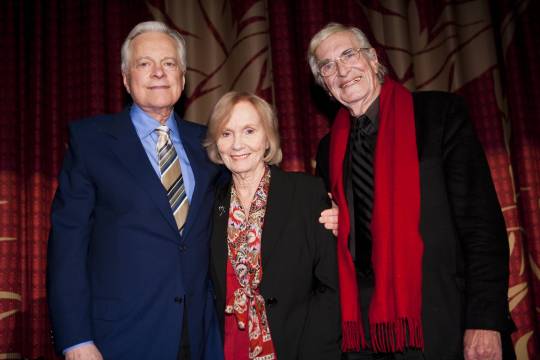
One of the most popular presentations are the “Live From” events, which features some of the greatest actors and filmmakers from the Golden Age of Hollywood in conversation with the late, great TCM host Robert Osborne and now with Ben Mankiewicz, the channel’s primary host. These interviews have played on TCM over the years. And a select few, including interviews with Oscar-winners Luise Rainer, Eva Marie Saint, Faye Dunaway and such legends as Norman Lloyd and Peter O’Toole, will be featured during the TCM Classic Film Festival: Special Home Edition.
As a movie writer for 26 years at the L.A. Times. I’ve had the good fortune of interviewing many of these legends. Here are some memories of my conversations with two of my favorites, Eva Marie Saint and Norman Lloyd.
Eva Marie Saint
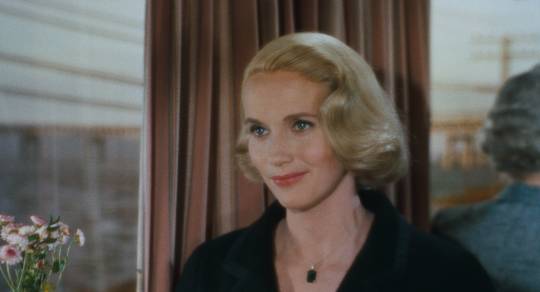
I have lost count of how many times I have interviewed Eva Marie Saint, now 95, who won a Best Supporting Actress Oscar as Edie, the girlfriend of Terry Malloy (Marlon Brando), in Elia Kazan’s 1954 Academy Award-winning masterpiece ON THE WATERFRONT.
But I remember the first time.
I was at the now defunct Los Angeles Herald Examiner when I was assigned to talk to her in 1986 about director Garry Marshall’s NOTHING IN COMMON, which stars Tom Hanks and Jackie Gleason in his final film. Saint had long been a favorite of mine. I was a huge fan of ON THE WATERFRONT and admired her performances in 1957’s RAINTREE COUNTY opposite Montgomery Clift and Elizabeth Taylor, Alfred Hitchcock’s 1959 romantic thriller NORTH BY NORTHWEST opposite Cary Grant and Otto Preminger’s 1960 epic EXODUS, where Saint was romanced by Paul Newman. I had also seen her on stage in 1979 in Los Angeles opposite Henry Fonda in the hit comedy First Monday in October.
From the moment she opened the door of the Westwood townhome she shared with her late director husband Jeffrey Hayden, I felt an immediate bond with her. Not only did we both hail from the same hometown, East Orange, N.J., Saint was down-to-earth, friendly and smart as a whip. And she’s always been frank and funny.
The last time I interviewed her in person in 2014, Saint talked about doing live TV in the late 1940s and 1950s. “My God, terrible things happened,” she said with a laugh, including exposing more than her talent on the soap opera One Man’s Family. Saint was doing a scene in a small pool opposite the actor who was playing her brother. At one point, she recalled, “someone was doing something offstage. You learn not to look away from what you are doing because you can be distracted.” But she finally looked, only to see a man off camera pulling his shirt up and down. “I looked down and saw my boobies were showing coast to coast,” Saint said, laughing. “I just kept in the scene and slid under the water. What could I do? It was live television. To this day, all of these years later, someone will say to me ‘Miss Saint, you were doing One Man’s Family…’ and I’ll say, ‘I remember.’”
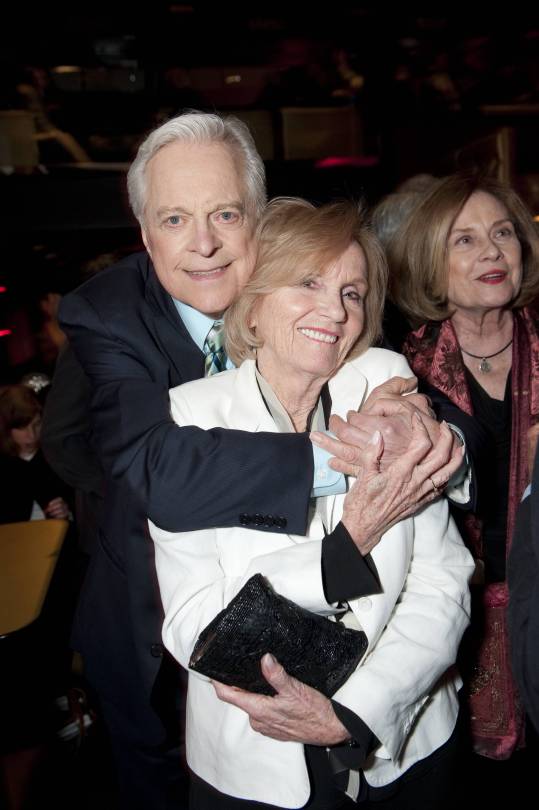
Saint was married to Hayden for 65 years until his death at 90 in late 2016. And he was as exceptional a person as Saint, sweet and friendly. I asked her how the two met. Saint was a young actress and model in New York in the late 1940s, and Hayden was working in radio at NBC. “He saw me on the subway from the back, and he liked the way I walked,” Saint said with a smile. Hayden also noticed a big black book she was carrying that was her modeling portfolio. “The book I was carrying said ‘Eva Marie Saint’ in gold letters,” she noted. “He thought ‘I like the name.’”
They were fated to meet. Not long after seeing her on the subway, Hayden saw her again at Radio City talking with actor Arnold Stang, who also happened to be the only actor that Hayden knew. “So, he could go over to Arnold and Arnold would say ‘Hi Jeff, do you know Eva Marie?’”
The married in 1951, had two children and grandchildren.
My heart skipped a beat when she talked about how strong their marriage was after six decades. Saint noted she had been “thinking about life and I guess I was a little low. I said ‘Jeffrey, what in today’s world inspires you?’ He put his head up and said ‘You.’”
Norman Lloyd

Norman Lloyd, who is still going strong at 105, is one of the most accomplished actors/producers/directors. Beginning as child actor in the 1920s, he starred on Broadway as a member of Orson Welles’ legendary Mercury Theatre in the late 1930s.
He’s appeared in countless movies, including as the evil villain who falls from the Statue of Liberty in Alfred Hitchcock’s 1942 classic thriller SABOTEUR, as well as Jean Renoir’s 1945 THE SOUTHERNER and Charlie Chaplin’s 1952 LIMELIGHT. And TV audiences may know him as the kindly Dr. Auschlander on NBC’s acclaimed medical drama St. Elsewhere from 1982-88.
Lloyd also had one of the strongest marriages in Hollywood. He and his wife Peggy, who died in 2011, were married for 75 years. Having interviewed him several times, I can attest that he is a terrific storyteller and the sweetest of peas.
When I chatted with him at his cozy Brentwood home in 2014, he was still playing tennis twice a week and regaling me with stories about Hitchcock (Hitchcock, Renoir and Chaplin were among his best friends.) In fact, Hitchcock saved his career in the 1950s. Lloyd had discovered jobs hard to find because of the Hollywood Blacklist. Though he was not officially blacklisted, his liberal leanings and friendship with those who had been blacklisted hurt his career.

That didn’t stop Hitchcock from hiring him to be an associate producer on his classic anthology series Alfred Hitchcock Presents in 1957. CBS told the Master of Suspense that there was a “problem” with Lloyd. Hitch persisted. “He said three words: ‘I want him,’” Lloyd recalled.
The Tiffany network, not wanting to upset one of the biggest directors in the world, immediately greenlit Lloyd, who initially worked with producer Joan Harrison, eventually became the executive producer of The Alfred Hitchcock Hour which ran until 1965. Lloyd also directed episodes of the series, including the devilishly fun 1960 installment “Man from the South,” starring Peter Lorre, Steve McQueen and the King of Cool’s then-wife Neile Adams.
Hitchcock and Lloyd reunited in the late 1970s for THE SHORT NIGHT, a thriller Hitch was hoping to make after 1976’s FAMILY PLOT. “Hitch, by the way, was not at his physical best,” Lloyd recalled. “He was really getting old and had difficulty walking. We were working on the script one day and he says to me, ‘You know, Norm. We are not going to make the picture.’”
Lloyd asked him what he meant by the statement. “He said to me a classic line: ‘Because it’s not necessary.’ When he died, the Directors Guild asked me to write a tribute to him, which I did. That’s what I ended it with.“
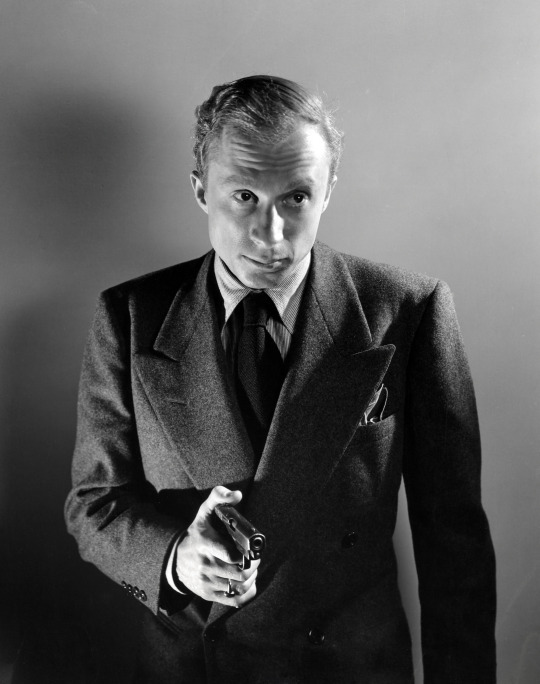
#Eva Marie Saint#Norman Lloyd#TCM#Turner Classic Movies#TCMFF#Film festival#blacklist#alfred hitchcock#old hollywood#Susan King
79 notes
·
View notes